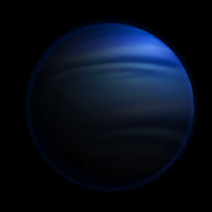About two decades ago, the only planets we knew were the ones in our solar system. And we discovered other planets, orbiting other stars. With years, more and more have been detected, and their number is constantly growing. Now, it turns out that our Milky Way Galaxy may swarm with Jupiter-sized rogue planets, wandering in the interstellar space. And there could be as many of these planets as stars in our Galaxy!
Takahiro Sumi, from Osaka University, Japan, and colleagues, observed the Galactic Bulge surrounding the centre of the Milky Way, and found 10 lonely Jupiter-sized planets floating freely, far from any star. To detect them, they used a technique called gravitational microlensing. Based on various parameters, they estimated the total number of such rogue planets: there could be as many as 400 billion of them! To give you an idea of their abundance, we estimate the number of stars in our Galaxy to be between 100 and 400 billion: these planets would be as common as stars!

The researchers’ work is published today in Nature.
Such planets have been predicted to exist by models, but their number was a mystery. If the models are right, there might actually be a huge number of lighter planets also wandering around, they should even be more common.
Gravitational microlensing, the technique used by the scientists for their observations, is due to massive object bending the light coming from background stars: while the lens mass is too low to observe the displacement of light, changes in brightness can be detected.
But how did these planets form? There are two possibilities. Simulations show that in the early stages of planetary formation, gravitational interactions between many massive planets can result in one of them literally being kicked out of the stellar system. However, such objects could have also formed on their own, via a gravitational collapse of matter.
Of course, with so many other planets populating our Galaxy, the question of alien life is raised again. Although the presence of life on objects that massive seems very unlikely, it does not necessarily mean that such worlds wouldn’t be worth studying. Indeed, some of these wandering planets might have carried along an orbiting body: these moons, heated by tides, might be able to sustain liquid water on their surface.
In the near future, new instruments should allow the detection of many more of these roaming worlds. If they turn out to be as common as the rearchers estimated, I like to think that we could be lucky enough to have such a planet not too far from home. Who knows, it could even be closer to us than Proxima Centauri, the nearest star to the Sun. If someday we are able to travel interstellar distances, that would definitely be an exciting desination.

